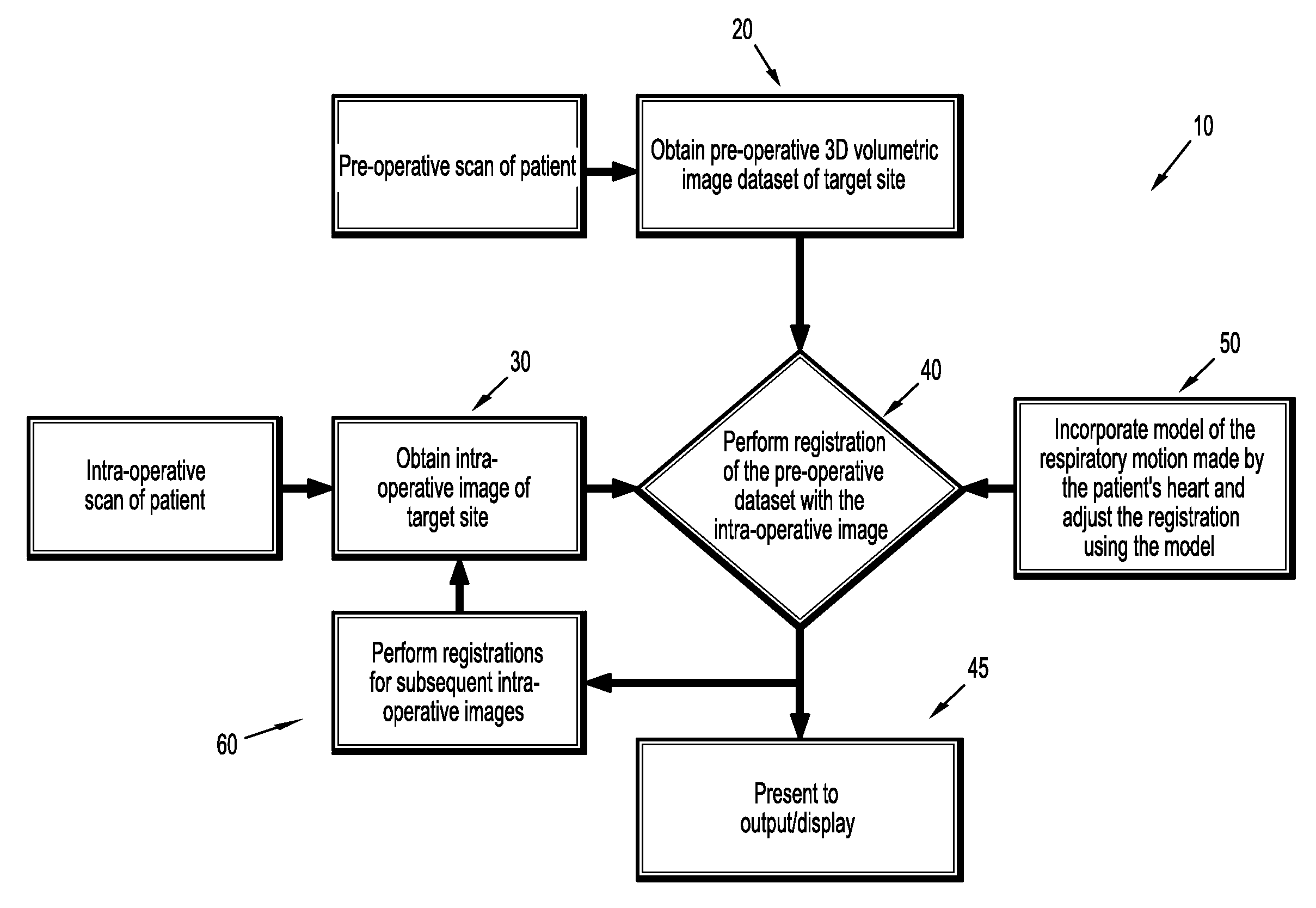Method of compensation of respiratory motion in cardiac imaging
- Summary
- Abstract
- Description
- Claims
- Application Information
AI Technical Summary
Benefits of technology
Problems solved by technology
Method used
Image
Examples
Embodiment Construction
[0036]FIG. 1 shows an illustration of a method 10 for compensation of respiratory motion in cardiac imaging of a subject patient carried out in accordance with the present invention. Step 20 shows that at least one pre-operative volumetric image dataset of the target site of the patient is obtained. An example is a 3D coronary tree image around the target site which is reconstructed from a preparatory, pre-operative CT scan of the patient. The CT scan may be performed using any commercially available CT scanner. The volumetric image dataset may be stored in appropriate data storage and then obtained via retrieval from data storage as described below. As previously noted, the medical professional routinely arranges for pre-operative plans, like the pre-operative volumetric image dataset, to be integrated into the interventional surgery suite of tasks to provide an assist in complex non-invasive cardiac interventional procedures.
[0037]In step 30, at least one intra-operative image of ...
PUM
 Login to View More
Login to View More Abstract
Description
Claims
Application Information
 Login to View More
Login to View More - R&D
- Intellectual Property
- Life Sciences
- Materials
- Tech Scout
- Unparalleled Data Quality
- Higher Quality Content
- 60% Fewer Hallucinations
Browse by: Latest US Patents, China's latest patents, Technical Efficacy Thesaurus, Application Domain, Technology Topic, Popular Technical Reports.
© 2025 PatSnap. All rights reserved.Legal|Privacy policy|Modern Slavery Act Transparency Statement|Sitemap|About US| Contact US: help@patsnap.com



